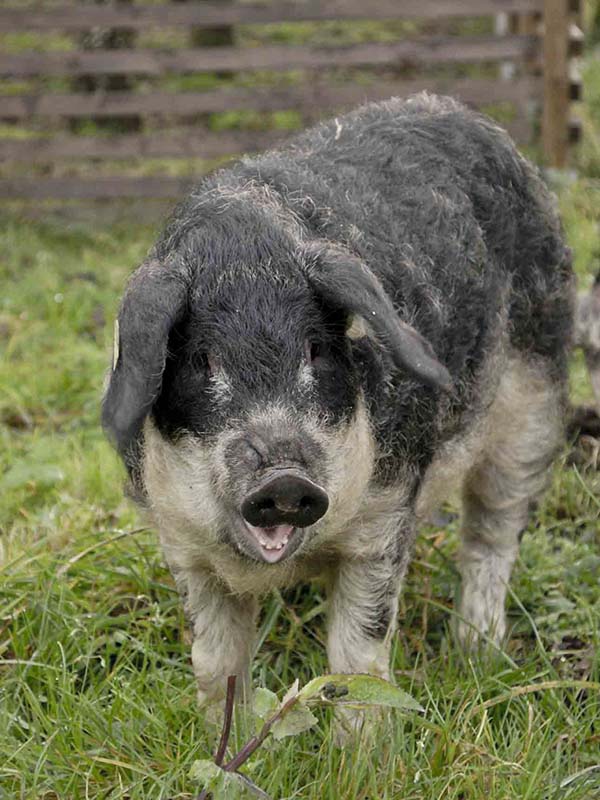Mangalitza Swine
The Mangalitza pig, also known as the Mangalica, is found in Austria, Germany, Hungary, Romania, and Switzerland, and it
is a primitive breed. The breed is a part of the European Lard breeds that are descended
from the wild boar. They were once the dominant pig breed in the Hungary, Serbia,
and the surrounding areas until wartime hit, when English pig breeds surpassed them
in popularity.
Mangalica, is found in Austria, Germany, Hungary, Romania, and Switzerland, and it
is a primitive breed. The breed is a part of the European Lard breeds that are descended
from the wild boar. They were once the dominant pig breed in the Hungary, Serbia,
and the surrounding areas until wartime hit, when English pig breeds surpassed them
in popularity.
This fall in demand for the Mangalitza went so far as leading to a brush with extinction: the world-wide population of these pigs fell to 150 pigs in 1993. Breeders have brought the breed back up to safety, and Hungary has entire, substantially-sized farms filled with Mangalitza pigs.
There are three surviving types: Blonde, Red, and Swallow Bellied. The Swallow Bellied, a black pig with white underline, wasn't created until the 1800s. It's a cross between the Blonde type, and the extinct Black type, which was last seen in the 1970s on the Serbs Islands.
Their numbers have also spread to North America and the United Kingdom. They arrived in the UK in 2006 and the United States in 2007.
The name "Mangalica" was coined by Vuk Stefanović Karadžić, a Serbian language reformer. It means "hog with a lot of lard."
Characteristics
The Mangalitza is most notable for its dense, woolly coat that protects it from extreme temperatures. The hair of this coat is thick, coiled into small rings, and it looks like shavings in the winter months.
Both sexes are pretty similar in build: females are around 64-67 cm tall and 200-220 lbs, and the males 65-70 cm and 220-225 lbs. Additionally, their skeleton is known to be fine but very strong.
Their temperature is pretty affable, and although they only have a litter size of about six, the Mangalitza has very strong maternal instincts. The breed is also known to be adaptive to low temperatures, and to be more resistant to stress and disease.
At one point, it was a lard pig, due to its ability to produce 70 liters of fat. But today, its place is in forestry, and producing specialty hams and salamis. Their place in the meat market is due to the meat being high in intramuscular fat, so it is juicer and more flavorful than in other modern breeds. That fat also has more monounsaturated fats, so it's shelf-life is longer and there's also a better Omega 3: Omega 6 fatty acid ratio than seed oils, so its a healthier alternative in cooking.
References
